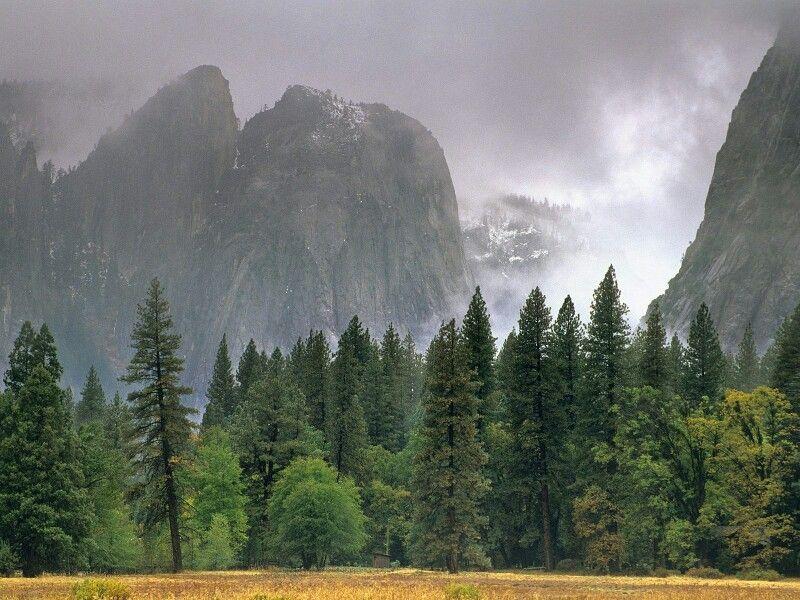
Forest landscapes should be able to support the movement of forest species and processes that provide important ecosystem services. We use a network theory approach to evaluate where and how silvicultural interventions can enhance key landscape properties that influence resilience, such as connectivity, centrality, and modularity.
Our approach for assessing structural connectivity uses current temperature and forest cover maps to identify gap-crossing areas. We also consider species-specific dispersal capacities to assess functional connectivity.
- Create Openings
The first step in landscape analysis and design is to create openings. Openings are areas of the forest where trees have been removed or killed by disturbance. Typically, openings are located close to other forests and have a mixture of forest types. They should have a variety of slopes to provide optimal conditions for a wide range of vegetation species. In addition, openings should be located on sites with good water access and are not too dry. If possible, they should be on or near the edge of the forest to minimize negative impacts on area-sensitive species.
The next step is to create corridors that connect similar patches in the landscape. Corridors link dissimilar patch types, such as a mature forest riparian zone connecting adjacent patches of mature forest in a cutover landscape to early-successional patches (clear-cuts). Corridors can also be made up of different types of openings. For example, a clearcut with a well-vegetated edge can function as a wildlife habitat corridor for species that prefer edges.
Forests with high matrix productivity and low disturbance frequency generally have greater ecological resilience than forested landscapes communication that are dominated by early successional patches. This is because the latter landscapes have a higher probability of disturbance and are more likely to undergo rapid succession.
It is important to recognize that the patterns of disturbance-created forest landscapes are dynamic, changing over time. For this reason, it is important to consider landscape patterns at several scales, from neighborhood to landscape, when designing management interventions.
Although it may be tempting to ignore humans as a factor in the landscape analysis and design process, we must recognize that people are present within and around National Forests, and their needs, desires, and expectations cannot be logically ignored. The question of how much priority to place on human landscape flows is a value judgment best resolved in each local landscape context.
- Create Corridors
Creating corridors is more than just connecting isolated habitat patches; it’s about establishing pathways to reconnect species with each other and with the rest of their landscape. Corridors can be continuous—large swaths of green corridors connecting different habitats—and/or stepping stone corridors that link smaller, disconnected habitat patches. Ideally, they can also incorporate climate refugia—areas where changing climatic conditions are less likely to impact wildlife.
The first step in identifying corridors is to determine if natural or anthropogenic barriers prevent animals from moving through a particular landscape. Then, if needed, specific barriers can be addressed through structural connectivity. This may include building overpasses and underpasses for mule deer, pronghorn, and other species that are blocked by highways; installing culverts to allow turtles and amphibians to travel under infrastructure and waterways; or restoring riparian areas to facilitate animal movement.
Once identified, the next step is to develop a habitat suitability model for a given species in the area in which the corridor will be placed. This will identify the types of vegetation and other features that are most important for that species, as well as the size and quality of available food, shelter, and water. It will also help identify the limiting factors that are restricting that species’ population and habitat.
In some cases, the results of this modeling will indicate that a particular corridor isn’t suitable for that species or that it would be better to focus on another site instead. Other times, the results will show that a particular corridor is very good for a given species. This information can be used to prioritize corridor sites for conservation.
There is also debate about how wide corridors should be in order to meet conservation objectives. One general rule of thumb is that a corridor should be at least 2 km wide for it to provide adequate passage for most species. However, place-based specifics are important for determining corridor width. For example, if a corridor is meant to provide passage for jaguars, it will be necessary to ensure the safety of the cats while they traverse human-dominated landscapes in search of prey.
- Create Waterways
Forest buffers – trees, shrubs, and grasses planted along streams to prevent sediment and polluted runoff from entering waterways – are an important part of a healthy watershed. They also act as a filter to keep nutrients and pests out of the water supply. Known as riparian forests, they help keep water clean and support fish and wildlife habitat. In addition, they help keep the watershed stable, absorbing floodwaters in wet periods and reducing erosion during dry times.
However, these ecosystem functions are under increasing pressure from human activity. Forests that once covered much of the world are now declining due to urbanization, clearing for agriculture, and uncontrolled fire. As a result, the natural services they provide – such as clean drinking water and biodiversity habitat – are at risk.
A growing number of conservation and restoration organizations are focusing their efforts on restoring the function of forested landscapes through forest landscape restoration (FLR). FLR is different from other tree planting and landscape improvement strategies in that it aims to restore ecological functionality across whole landscapes rather than individual sites. It combines new plantings with managed natural regeneration, agroforestry, and improved land management practices to produce multiple benefits and manage risks over time.
Research shows that the restoration of functional connectivity in forested landscapes is critical to increasing their resilience to environmental stressors. The goal of enhancing functional connectivity is to allow species to move between different ecological niches in response to unexpected disturbances. High functional trait diversity and structural redundancy in forest landscapes, which can be achieved by boosting compositional and functional connectivity, will make them more resistant to climate change and other threats (Messier et al., 2018).
The simulated experiments we report here show that FDN and, to a lesser extent, CCA promote increased functional trait diversity, resulting in higher functional connectivity. As a consequence, the results indicate that promoting functional complexity in forested landscapes is an effective strategy to protect biodiversity and restore essential services under a changing climate.
Boosting landscape-scale functional connectivity should be seen as a valuable but long-term investment given that forest ecosystem dynamics develop on decadal to centennial time scales, with effects only becoming apparent after these time intervals have passed. Therefore, This approach to forestry is complementary to approaches that aim to improve and stabilize forest productivity on shorter time scales.
- Create Grasslands
Forests may get the attention of most conservation efforts, but grasslands are just as important. These largely open ecosystems are bastions of biodiversity, from charismatic megafauna to humble pollinators to rare wildflowers. They also perform critical functions like sequestering carbon, cycling nutrients, building soil, and regulating water quality.
But while grasslands are essential to human life, they are incredibly fragile. In fact, how we manage them makes them increasingly vulnerable to threats that could ultimately undermine their survival. For example, in an attempt to increase agricultural productivity, many landowners clear grasslands for agriculture, replacing them with dense forests of fast-growing trees and shrubs. Such reforestation homogenizes the landscape and decreases biodiversity but is not necessarily sustainable over the long term.
This is because forests and grasslands compete for sunlight in the same habitats. In the past, regular fires in the savanna ecotone helped to keep grasses out of forests, but modern agriculture and climate change have disrupted this natural process.
As a result, grasslands are now at risk of losing their competitive edge. As they are exposed to more frequent and intense fires, they become less able to protect themselves from the burning heat. As they lose their ability to recover from fire, grasslands shift their advantage towards trees and shrubs, which grow quickly, shade out grasses, and take over the landscape.
The good news is that there are ways to restore and even expand these ecosystems. To do that, however, we need to rethink how we think about landscape restoration—for example, by integrating grasslands into forested landscapes and prioritizing noninvasive, native tree species.
Afforestation programs in grasslands or savannas have often focused on planting forests of exotic, fast-growing species like eucalyptus and pine. These trees grow well in a wide variety of conditions, including droughts and high temperatures. But when planted on a large scale, they can overtake grazing grasslands and increase the risk of fire.
To combat this, SPLT has begun to purchase land with grasslands that are slated for reforestation and piloting a new protocol to compensate for the loss of those lands by investing in savanna-like habitats elsewhere. Under this protocol, in addition to ensuring that the land is not mowed for at least 100 years after it has been issued its last credit, SPLT is committed to using an integrated approach that will help ensure that the grasslands are protected and remain intact as trees continue to grow.
RELATED ARTICLES
Latest Articles
 Unlocking Success: Mastering Bank PO Interview PreparationIn EducationApril 24, 2024For banking careers, PO interviews stand as formidable […]
Unlocking Success: Mastering Bank PO Interview PreparationIn EducationApril 24, 2024For banking careers, PO interviews stand as formidable […] The Strategic Value of Purchasing FontsIn TipsApril 18, 2024In today’s visually driven world, fonts are more […]
The Strategic Value of Purchasing FontsIn TipsApril 18, 2024In today’s visually driven world, fonts are more […] Revolutionizing Business: How AI Transforms Customer Experience in the Inflatable IndustryIn BusinessApril 16, 2024Inflatable water slides are the epitome of summer fun, […]
Revolutionizing Business: How AI Transforms Customer Experience in the Inflatable IndustryIn BusinessApril 16, 2024Inflatable water slides are the epitome of summer fun, […] Most Asked Microservice Interview Questions For 2024In TechnologyApril 2, 2024To keep up with changing trends in the tech industry […]
Most Asked Microservice Interview Questions For 2024In TechnologyApril 2, 2024To keep up with changing trends in the tech industry […] Best JavaScript and CSS Library In 2024In TechnologyApril 2, 2024With the ever-expanding functionality of web […]
Best JavaScript and CSS Library In 2024In TechnologyApril 2, 2024With the ever-expanding functionality of web […] Front-End Development Trends to Follow in 2024In TechnologyApril 2, 2024For better engagement, the front-end development of […]
Front-End Development Trends to Follow in 2024In TechnologyApril 2, 2024For better engagement, the front-end development of […] Simplifying Mealtime: Meal Prepping for a Family of FourIn UncategorizedMarch 22, 2024In the hustle and bustle of daily life, planning and […]
Simplifying Mealtime: Meal Prepping for a Family of FourIn UncategorizedMarch 22, 2024In the hustle and bustle of daily life, planning and […] How to Freeze Dry Candy With And Without a Machine?In FoodFebruary 27, 2024A candy lover constantly searches for novel and […]
How to Freeze Dry Candy With And Without a Machine?In FoodFebruary 27, 2024A candy lover constantly searches for novel and […] How to Get Something Out Of Your Eye Immediately?In healthFebruary 27, 2024Getting something inside your eyes can be frustrating […]
How to Get Something Out Of Your Eye Immediately?In healthFebruary 27, 2024Getting something inside your eyes can be frustrating […] The Evolution of Remote Control Technology: From RC Cars to DronesIn TechnologyFebruary 22, 2024Remote control technology has come a long way since […]
The Evolution of Remote Control Technology: From RC Cars to DronesIn TechnologyFebruary 22, 2024Remote control technology has come a long way since […] Unveiling the most popular carnival costumes: A colorful parade of creativityIn FashionFebruary 19, 2024In the world of festivities and merrymaking, few […]
Unveiling the most popular carnival costumes: A colorful parade of creativityIn FashionFebruary 19, 2024In the world of festivities and merrymaking, few […] Custom GPTs: The Next AI Opportunity for BusinessesIn Business, TechnologyFebruary 14, 2024The rise of artificial intelligence has transformed […]
Custom GPTs: The Next AI Opportunity for BusinessesIn Business, TechnologyFebruary 14, 2024The rise of artificial intelligence has transformed […]
stopie.com is a participant in the Amazon Services LLC Associates Program, an affiliate advertising program designed to provide a means for sites to earn advertising fees by advertising and linking to Amazon.com.
Clicking on an Amazon link from stopie.com does not increase the cost of any item you purchase.
We will only ever link to Amazon products that we think our visitors may be interested in and appreciate learning more about.



